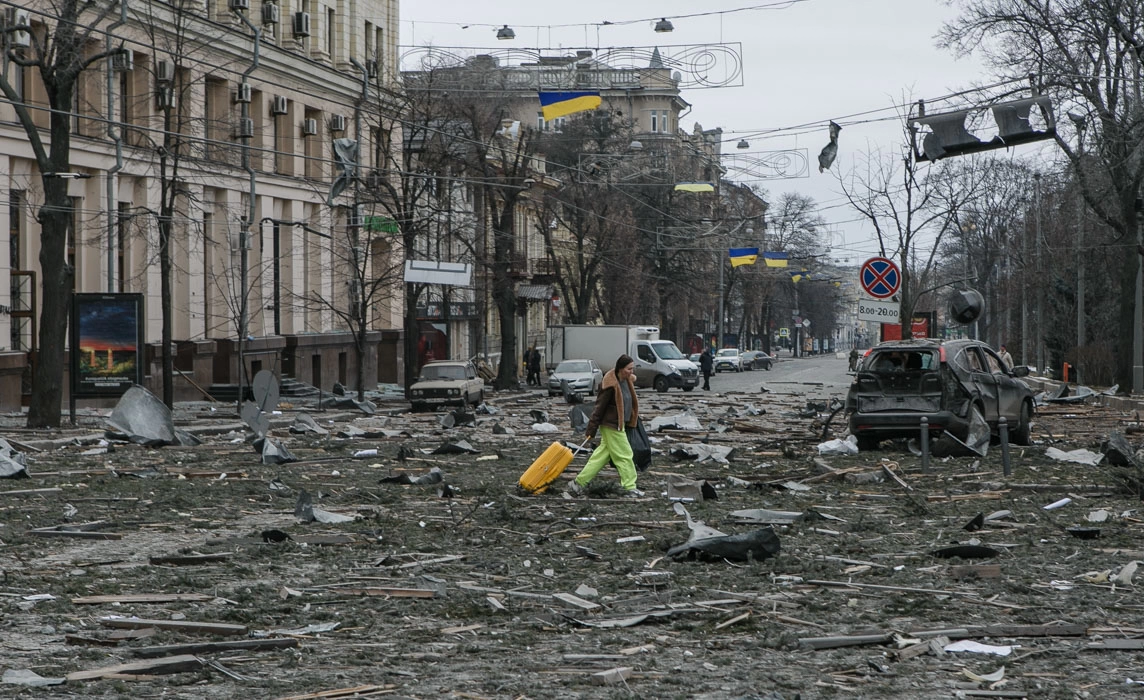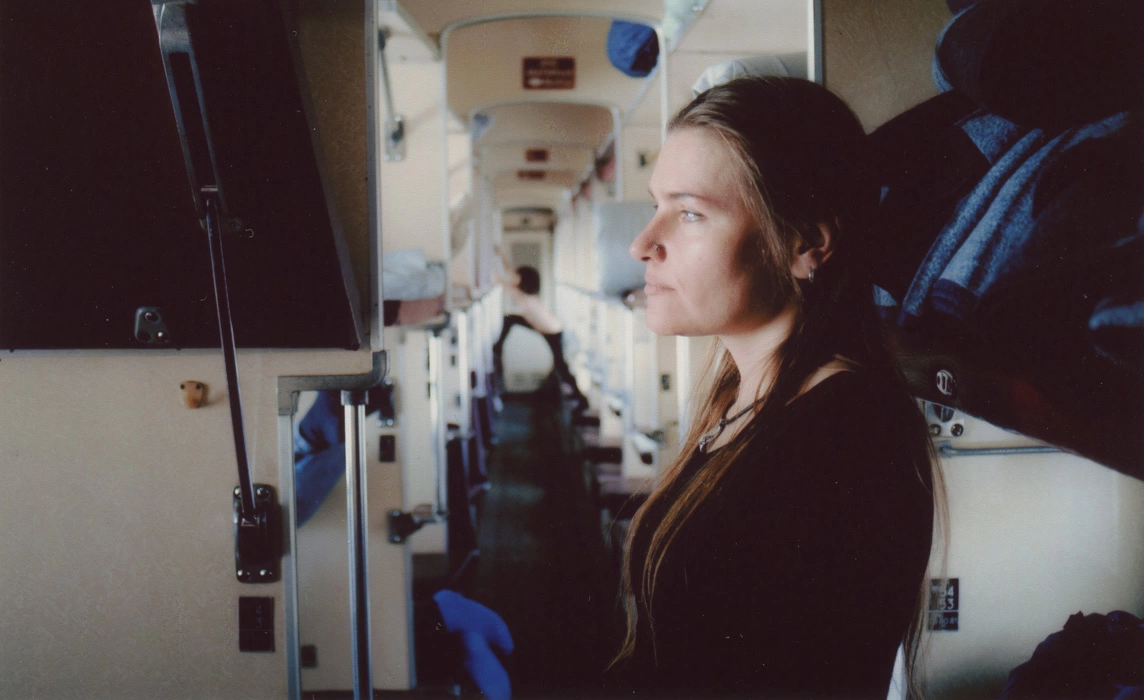It's Saturday, 5 am, April 2024. I’m standing by a pond in the heart of Văcărești Park, Bucharest’s urban delta, alongside a small group of people.
It’s still dark. We stand in silence—no one says a word—and after about 10 minutes of stillness, the world around us begins to stir – birds layering their songs one over the other as morning begins to unfold. We close our eyes and listen. Dozens of birds weave songs in a performance more beautiful than words can capture, all set against the low, constant hum of the city that, of course, doesn’t pause even at 5 a.m. on a Saturday.
That moment has stayed with me, even a year later. It always brings to mind the bird orchestra of Cișmigiu Gardens—a small oasis for our feathered neighbors—which transformed my first three months in the capital into one magnificent dream.
From the rooftop of the apartment block where I spent every morning, I’d hear daily the songs of the nightingale, blue tit, woodpecker, starling, golden oriole, jackdaw, crow, and blackbird. I was fascinated by how, each pre-dawn, nature would proudly display its colorful chorus.
I could stop here and let that image speak for itself. But you might be wondering: what was I even doing in this natural park at 5 in the morning?
Earlier that April, right in the middle of a meeting, my colleague Ioana Pelehatăi mentioned an upcoming event: “a listening session of bird recordings followed by a sound walk in Văcărești for the dawn chorus.” It was something completely new to me, and since I’ve been falling more and more in love with nature’s early morning concerts, I couldn’t say no.
Sound walks quickly became the most perceptive kind of meditation for me: a moment when interest in visual, cognitive, or any other type of stimuli is replaced by a full openness to hearing. In that sense, the chance to take part in a sound walk through Văcărești felt like a natural extension to this kind of listening.
The event was organized by Semi Silent in collaboration with the Czech Centre in Bucharest, as part of Sonic Future Residencies – a program that invites artists and researchers to explore the relationship between natural and human-made soundscapes, particularly in rural areas and hybrid urban zones.
Semi Silent is a project that creates an open and curious space — one that welcomes both local and international artists, as well as people like me, who have nothing better to do at 5 a.m. than listen to birdsong. You can find all their public events online: workshops, listening sessions, live performances, and talks; some held in nature, others in galleries or unconventional spaces.
Anamaria Pravicencu, the project's artistic director, organized a listening session featuring works by Tomáš Šenkyřík — a mix of recordings, from ambient sounds of Czech nature to the calls of rana arvalis — followed the next morning by a sound walk with him through Văcărești Natural Park, right when birds put on their morning concert – 5a.m., that is.
Tomáš has one of the most unlikely and beautiful portfolios I’ve come across: he was an ethnomusicologist at the Museum of Romani Culture in Brno, played in a band, then shifted to composing electroacoustic music, and now lives with his family in South Moravia, where he also happens to be the deputy mayor of the town of Židlochovice.
He’s a founding member of the Central European Network for Sonic Ecologies and of the art project Skupina, and his current focus is on the more fragile sounds of nature — the ones we can’t hear “with the naked ear,” which he often listens to and documents starting right from the proximity of his own house.
His attention to subtle sonic textures became clear to me during the soundwalk the next morning, when, together with Tomáš, Anamaria, and a group of about 15 people, we stepped into darkness and complete silence along the main path of Văcărești Park — a journey meant to help us discover a different way of listening.
After we found a good spot near a larger pond, we sat down and listened.
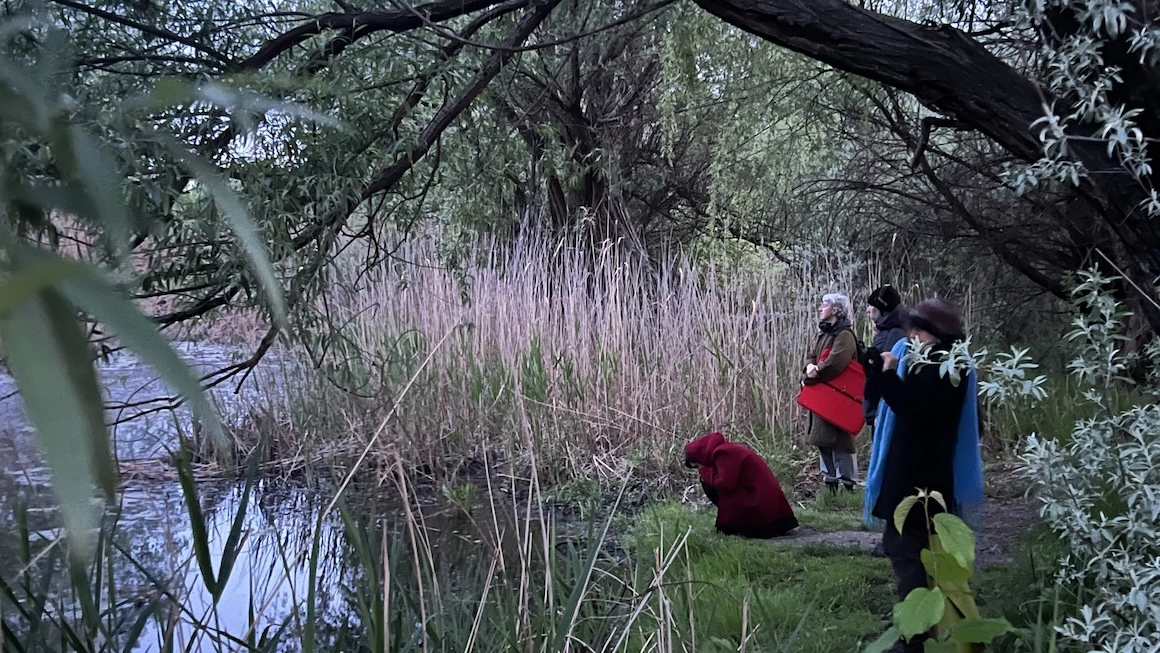
For the past few years, I’ve been listening to the field recording channel on NTS Radio — a stream of recordings and sound works that, while it first seemed like just a calm backdrop for reading, turned out to be an open door into a sound practice with its own kind of discipline. Last summer, during a sound art and field recording workshop (also organized by Semi Silent) led by artist Stéphane Marin, I came to better understand that field recording involves a compositional process that’s anything but casual. We talked about the importance of active listening — the practice of fully redirecting one’s attention toward sound — in an interview available here.
The experience itself – this “guided tour” of sounds – was unique for me; I felt like I could “sharpen” my ears to the surrounding natural sounds much more effectively with a group practicing active listening than alone on a rooftop. We concluded the experience with a show put on by black-headed gulls (Larus ridibundus), which you can hear and see in the park year-round.
Curious to learn more about a polymath like Tomáš, I invited him to answer a few questions to discover how he built this path, how he manages to juggle so many passions, and how he finds time for it all.
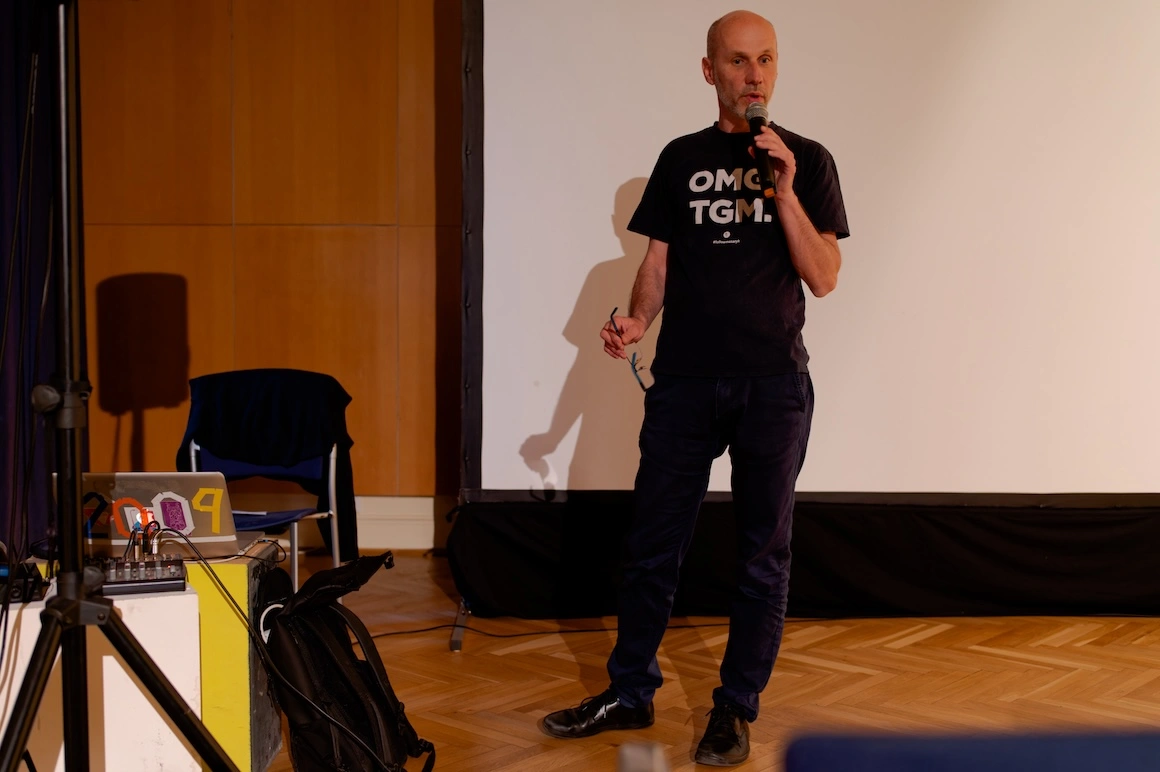
Vlad Hodrea: I want you to tell me about your hometown. Describe the soundscape of your hometown, and South Moravia in general.
Tomáš Šenkyřík: The soundscape of my town is very significant to me. When I wake up, the first thing I hear is my neighborhood coming to life. South Moravia is quite unique, with its floodplain forests and wetlands, but also, unfortunately, with human noise—like cars. What stands out in my town are the small gardens. These gardens are vital because the fields around town have degraded, which means that many birds and insects have disappeared. So now, these gardens are the primary source of natural sounds, especially bird songs, and they represent the typical soundscape of the area.
I bet you're connected to nature around your hometown.
Yes, I am really connected to nature, and I try to reflect that in how we work in our garden—together with my wife and children, we do everything gently. We want to hear the birds and see the insects in our garden. That's why we avoid using chemicals. We plant bushes and trees, letting nature thrive. We don’t use any chemicals to protect the plants or fruit, preferring a natural approach instead. I believe what you do in your garden is very important. For instance, if you have old trees, they can really enhance the soundscape, bringing more life to the garden and adding to the richness of the sounds around you. You might even hear birds like the great woodpecker (Dendrocopos major).
Since you've mentioned the loss of insects and birds due to insecticides and pesticides, what can be done to protect nature? What steps can be taken to preserve biodiversity and prevent the landscape from becoming less diverse?
I believe it's crucial to work with small biotopes (self-contained natural habitats) and create green spaces between the larger fields. Managing water around these areas is also vital. We're trying to restore our landscape to its natural state, but it's not always about big projects or vast areas. You can make small 'islands' between fields, and this can dramatically change both the landscape and the soundscape. In our town, I'm fortunate to be in a position where I can influence these kinds of projects—small wetlands, biotopes, and planting trees around them. These efforts can bring nature back and make a difference.
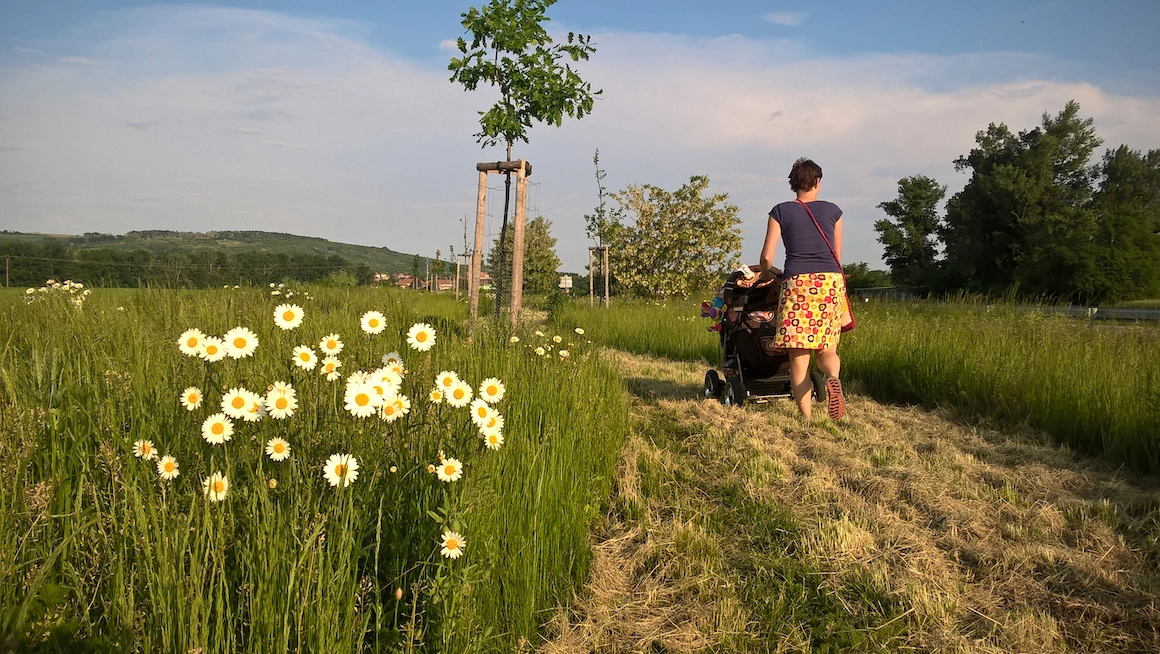
I remember from the “Păsări din jurul nostru” (=“Birds around us”) listening sessions at the Czech Centre, that during the Q&A you told us about the initiative in your hometown, Židlochovice to restore a wetland landscape. I’d love to hear more about that project, as there might be something we could try to implement in Romania to bring nature back to life.
Yes, we now have two wetland projects. The first one dates back to 2013, and it was quite challenging to implement. People in our hometown were initially against the idea, mainly due to concerns about mosquitoes. It was unexpected and difficult to deal with that opposition. However, the project turned out to be very successful. What helped was the fact that we were able to secure European funding for the wetland, which covered the entire cost. This financial support was a strong argument to win over the community since it didn't impact local funds.
The first project is now complete, and since 2013 we've developed something between a park and a forest, with many trees and bushes. In recent years, people have come to love this space—children play there, adults walk their dogs. One of the most important outcomes has been the significant improvement in the climate of that part of town. We used to have a big problem with dust in the air, especially from agricultural activities and chemical use, but now the situation has improved drastically.
Now, that issue has been resolved—the air is fresher, the temperature has dropped a bit, and there’s no more dust. People are really happy with the results. It’s interesting because when we started working on a second, much larger project—about ten times bigger, covering around one kilometer—the community was supportive right from the beginning. Two ministers from the Czech government visited and told us how impressed they were. They see it as a great inspiration for nearby towns and villages, not only here but across Moravia. This project is not just about restoring wetlands; we also reintroduced a natural meander to the regulated (artificially modified) river, which was crucial for water retention. When rivers flow straight like highways, the water runs off too quickly, but by restoring the meanders, we help maintain water in the landscape, which is vital for the floodplain forests.
And I suppose this project requires constant work and maintenance.
Yes, it does. Floodplain forests require water throughout the whole year.
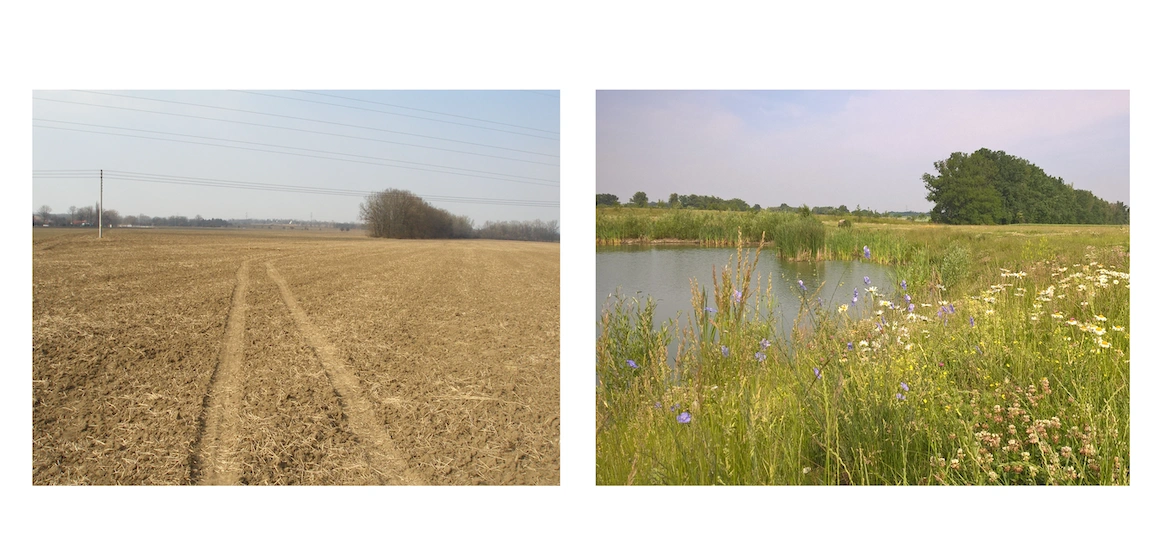
I’m curious how you connect this topic of ecology with field recording, since you’re a field recordist, among many other titles.
I think when you're out recording in nature—whether it's in forests or wetlands—you really become aware of the ecological changes. You can hear the differences, like when certain species suddenly disappear due to shifts in water levels, for example. So, while recording, it’s natural to start thinking about your environment in terms of ecology. I’m glad I can have some influence on these issues in my town, though I don’t have much time to be actively involved in ecological groups. However, I do try to collaborate on certain projects when I can.
Ecoacoustics, a shorter term used to describe acoustic ecology, is the study of how sound—both natural and human-made—affects living beings and environments. This isn’t just about reducing noise or preserving quiet—it’s about rethinking our relationship with the acoustic world. It asks: what kinds of sounds do we allow to dominate our environments, and what voices—human or more-than-human—are we drowning out in the process? In this sense, acoustic ecology becomes a form of care: for the nervous system, yes, but also for the histories, presences, and rhythms that make a place what it is. It invites us to listen politically and poetically—to understand, for example, how a low highway hum might signal both infrastructure and inequality, or how the absence of birdsong might reflect ecological imbalance. In this framework, to shape a space acoustically is to shape it ethically.
It sounds like you’re already doing a lot for the ecology of your hometown and the surrounding area, which is fantastic.
Yes, for example, when we worked on the second project, we also considered noise pollution. We created a sound barrier using the natural ground in the area, and it was really interesting because it gave us the chance to talk to the locals about ecoacoustics. I explained how living in a place with reduced noise can positively impact the nervous system and overall well-being.
I agree – as you may have heard and experienced, Bucharest can be quite noisy at times.
Yes, I live in a small town, and I’m really happy with where we are. Every evening, I listen to the Italian tree cricket (Oecanthus pellucens). It's a tiny insect, and it produces this beautiful sound by stridulation (rubbing its wings or legs together to make noise). It’s a bit like a continuous drone that goes on through the whole night, and you can really hear it because the place is quite peaceful.
I think you must have some really lovely villages and landscapes as well. A girl I met in Bucharest at the Czech Centre told me about your folklore traditions and all the beautiful villages, where I’m sure you can also find some amazing soundscapes.
Tell me more about your project, Soundscape.
Just yesterday I was thinking about updating my website. I haven’t had time to record new sounds, but I plan to work on it.
This website is a sound map of South Moravia. Originally, the idea was just to map the sounds of the region, which seemed small, but as I started, I realized it's quite a large and complex area. It’s interesting how your own garden can feel like a vast space when you focus on its soundscape.
For me, my garden is like a sound laboratory, a really beautiful one. South Moravia as a region is incredibly diverse, and you can observe changes in the soundscape across different areas. For example, you can hear the difference between low-altitude places near the Morava River confluence and the higher-altitude White Carpathian mountains, which are about 700 or 800 meters above sea level. These contrasting environments create very different soundscapes—from floodplain forests to typical forests.
I’m recording these sounds, documenting species unique to specific parts of South Moravia. One of the most rewarding things is knowing that students and children are using my sound map for learning, thinking about the connection between sound and landscape. It makes me happy that people are engaging with it.
It sounds like for you the floodplain forest is one of the most important places for you to listen and to find lots of sonic diversity.
Yes, I think that floodplain forests are probably among the most fascinating areas in our country in terms of biodiversity. They can be compared to rainforests in their complexity. These forests are crucial not only for biodiversity but also as an ecological topic, especially due to concerns with groundwater levels and management.
Floodplain forests are also incredible spaces for sound exploration. Their texture, humidity, and natural reverberation make them perfect for studying and capturing soundscapes. The reverberation in particular plays a key role in how we perceive sound, giving it a richness and depth that’s hard to find in other environments.
For readers who might be thinking about starting their own journey in field recording, could you share a bit about how it all started for you?
It was a really wonderful time when I first started field recording. After finishing my studies, I worked at the Museum of Romani Culture, focusing on ethnomusicology. It was an exciting period because the museum was still in its early stages, and I had the freedom to choose equipment for our projects, often funded by European grants. This was around ‘99-2000, and I began collaborating with Eva Davidová, a well-known Romani researcher. We started visiting Romani settlements in Slovakia, which was a fascinating experience. Many elderly Roma people shared stories about the Holocaust and traditional Roma musicians, while I was recording their songs and stories.
We used MiniDiscs at the time, and I personally found them very convenient because I could start recording quickly, and the sound quality was quite decent. The atmosphere in the Roma settlements was magical—people would sing in their backyards with birds chirping and children playing in the background. When I listened to the recordings in the studio later, I realized how rich and full of life they were compared to controlled studio environments, where everything felt more constrained. It was during this time that I started understanding the significance of nature and the soundscape around us.
After I left the museum in 2008, I wanted to focus on recording my local environment. But when I started looking for equipment, I was shocked by the prices. It was frustrating at first, but I found ways to borrow gear and gradually saved up. Early on, I was often disappointed with the results when using cheap microphones, especially when trying to capture sounds from a distance, like birds. The noise was overwhelming, and the clarity I had hoped for wasn't there. But over time, I was able to improve my setup and really dive into field recording.
For those who are just starting out with field recording and might not have access to gear or more information beyond reading this article (and maybe listening to a few recordings)—what advice would you give them to begin their journey?
I believe that nowadays, there's a great opportunity to get quality equipment at an affordable price. For those just starting, I’d recommend checking out Facebook groups or reading interviews with field recordists. One place to start would be looking into the microphones made by Jonáš Gruska, like the Uši mics. They're really great!
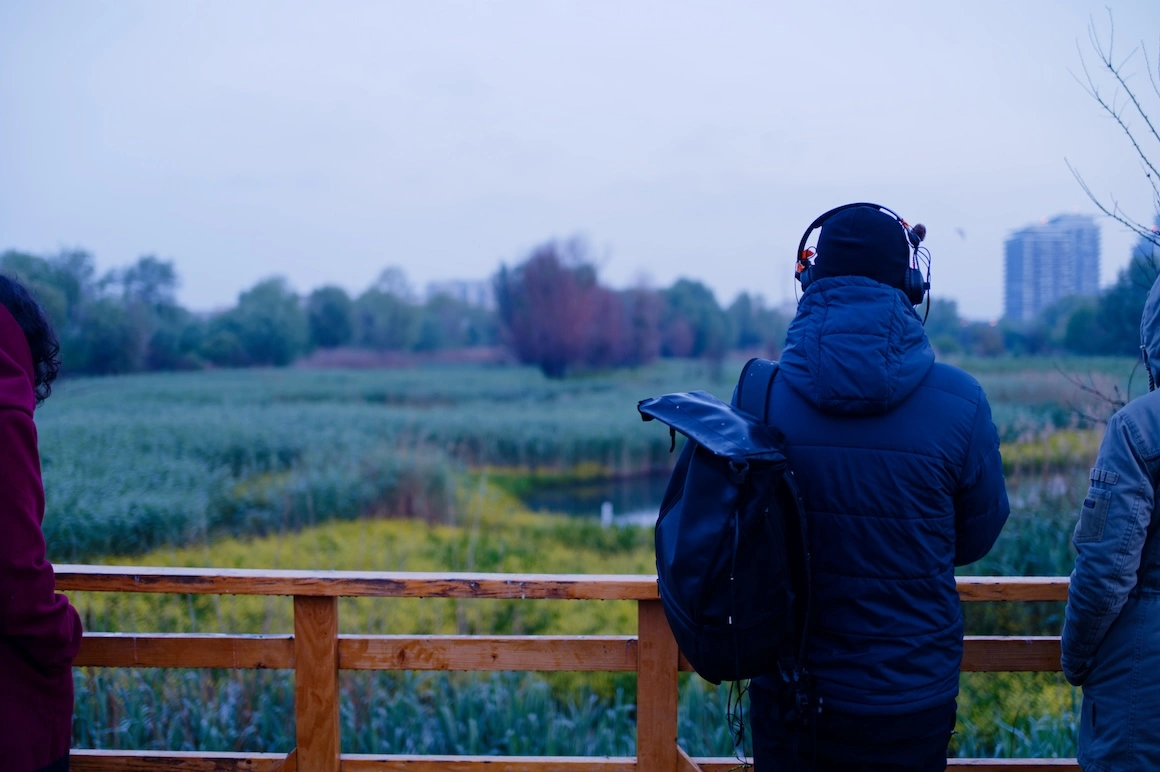
When it comes to equipment, having a decent recorder with external microphones can really elevate your experience. I also strongly recommend using quality headphones, like the Sennheiser HD 25, as they’re crucial for accurate listening. Once you’re set up, the key is to listen deeply. Choose a spot that resonates with you, plug in your headphones, and immerse yourself in the environment. It helps to move slowly—left, right—so you can notice the subtle changes in the stereo field and connect with the soundscape around you.
Thank you so much! If there’s anything else you’d like to add...
I’ll just mention one thing for now. I’m really excited because I’m about to release a project I worked on with my friend Manja Ristić.
The album we recorded together features our field recordings—both mine and hers—and we collaborated on mixing and producing it together. I’m especially happy we managed to finish it since we’ve both been so busy. We did it all through emails and online exchanges, uploading files to our servers and composing them that way. It’s incredible how you can make an album online. It’s a beautiful experience.
Cover photo: Petre Fall

